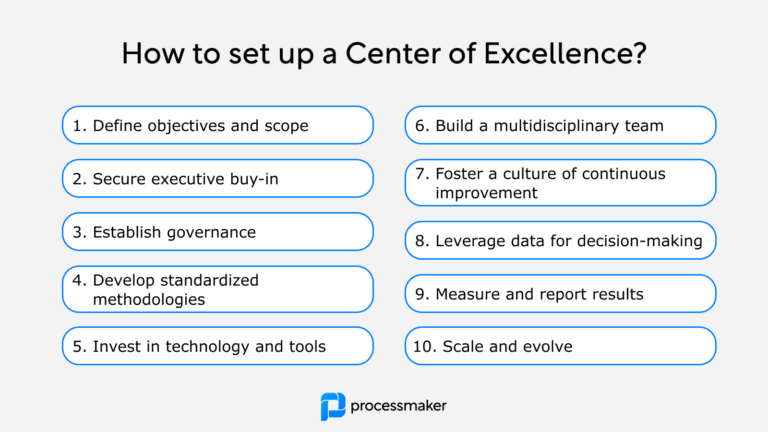Intelligent Business Process Management software (iBPMs) has become a hot topic in the current era of automation and digital transformation. Many renowned software analysts, who openly recommend business process management solutions, readily reinforce BPM’s enormous potential. In fact, BPM implementation offers significant advantages, some of the key benefits contain immense cost savings and the minimization of manual effort.
Automation also enables organizations to prioritize the development and growth of specific business processes more efficiently. iBPMs, in particular, when used to automate repetitive tasks and to cut unnecessary expenses, can be remarkably effective. Further, iBPMs can be utilized to increase organizational productivity and efficiency — when executed correctly. Nonetheless, it is important for companies to be mindful when adopting BPM because it can be easy to make errors that could impact profitability since it can be quite easy to miss relevant opportunities and focus the BPM initiatives on the wrong things.
Some, however, remain wary about some of these arguments, claiming that businesses can be trapped into a particular solution that can lead to a downward spiral of inefficient ways of operating and costly adjustments when systems need to be modified.
Some argue that BPM, when generally applied, often fails to meet its expected ROI. Yet, this might be due to some confusion around calculating ROI for BPM initiatives. To take this a bit further, it is difficult to quantify indirect ROI. To illustrate, the cost of the project should be calculated — along with cost savings or profit increases. These would be forms of direct ROI. But, indirect ROI such as reducing risk and improving brand image is much more tricky to put into hard numbers. If an organization is fined $20 million dollars for a preventable error, how would you know until after the mistake has been made?
The reality is that there are legitimate points for either side and various types of deployments. When deployed properly, BPMs can continually decrease costs, time, and errors. But, this takes a clear sense of how BPM and its associated technologies can help to achieve your organization’s strategic objectives.
In short, BPM is an approach that incorporates a blend of company practices to improve daily operations, and it is crucial to avoid these common mistakes to ensure successful adoption.
 Implementation without help
Implementation without help
It’s common for high-level executives to presume immediately that they don’t need any guidance or assistance. The creation of a process map will quickly become a guaranteed waste of effort, without the strategic involvement of other depts, senior staff, employees, and the final decision-makers. Problems will arise if workers can not agree on how they work, how the process map can be adjusted, and how the duties and the roles of everyone involved are to be defined.
Murky start and end
Let’s face it, the majority of business optimization deployments fail miserably. One of the reasons can be attributed to a vague initiation and ending. Businesses must thoroughly comprehend their current system to avoid such a dilemma before starting on any optimizing initiatives. Ask these specific questions at the start of your endeavor: Who is participating?
- Which variables are utilized for input and output?
- What is the average duration for the completion of a single process/event?
- How many questions are posed, how are they managed, and who addresses them?
If you have analyzed your findings and found a few problem areas, then you should address them immediately. Failure to change your business process management could actually end up damaging your organization over the long term. Besides this, profitable companies with an established track record are those who are quick when it comes to adapting to new developments.
Silo mind
This type of thinking will hinder your organization’s potential to achieve progress, as well as inhibit the economic growth of your company. There are many elements in every particular company that has to work together to help improve business processes. It is impossible to receive many benefits from either entity if everyone fails to actively contribute.
Not adjusting business processes before deployment
It is important to look for the need for further changes before automating and after you have identified the “as is” procedures. Too often, current systems actually are converted and weak processes become centralized.
On the other hand, BPM allows organizations to look at what they are doing and to figure out where mechanisms can be enhanced. Are positive results always obtained with your current business processes? If the answer is no, can you identify the reason? What needs to be done to fix things? Do your current procedures require duplication? Which processes can benefit from automation? Which procedures are better off taking the manual route? What’s the most efficient way to transition from manual to automated?
At this stage, it can help to use improvement techniques demonstrated by Six Sigma processes and guidelines. Every stakeholder, working collaboratively, from an early stage will help to keep processes updated and streamlined.
Too many signatures
At times, there can be such a thing as too many sign-offs and reviews. As they say, too many cooks in the kitchen can spoil the pot. Of course, processes should be clearly defined from the beginning to ensure the minimization of errors and repetitive procedures. There is, therefore, a compromise that must be made between a process map and needing too many checks and balances that only serve to slow things down to a halt. Requiring too many checks means you just can’t seamlessly move on to the next phase.
Unnecessary KPIs
KPIs are metrics used for measuring organizational success. They’re the indicators that help to ensure that operational efficiency is moving in a positive direction. That is why businesses must be careful when identifying KPIs. Many specific KPIs can include those afflicted by external influences, unknown, or vague ones and those not aligned with corporate objectives.
Automation failure in any enterprise is also a common error. When automation is misdefined, or inadequate, it just culminates in the completely opposite direction. Instead, if a BPM process is executed according to schedule and accompanied by an impeccable change management process, it can provide the entire company with clear advantages.
In conclusion
Begin with a solid understanding of what you want to accomplish with BPM, strengthen mechanisms before you really consider automation, and ensure that the company maintains possession of any of the improved deliverables.





